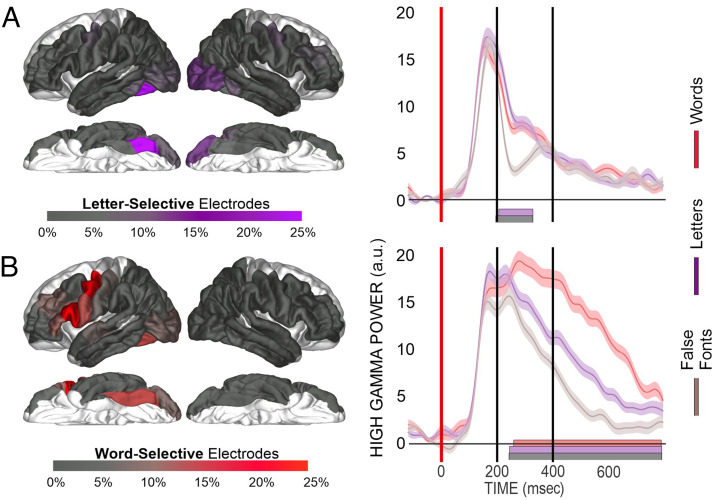Figure 3. .
Characterizing task-modulated electrodes. Language-sensitive electrodes were characterized as either letter-selective (words > false fonts) or word-selective (words > false fonts and words > letters). (A) The left panel displays the proportion of electrodes in an ROI displaying a letter-selective effect. The right panel displays an example fusiform electrode from Patient P15 displaying a letter-selective effect. Vertical axis for HGP is in arbitrary units (a.u.). The gray bar highlights a significant ANOVA effect between conditions, and the purple bar highlights a significant difference between words and false fonts. (B) The left panel displays the proportion of electrodes in a region displaying a word-selective effect. The right panel displays an example fusiform electrode from Patient P16 displaying a word-selective effect. Vertical axis for HGP is in a.u. The gray bar highlights a significant ANOVA effect between conditions; the purple bar highlights a significant difference between words and false fonts, and the red bar highlights a significant difference between words and letters.

